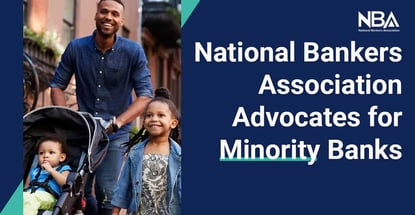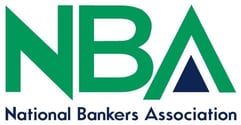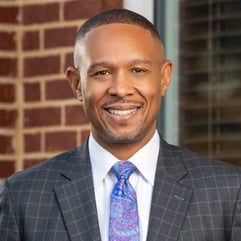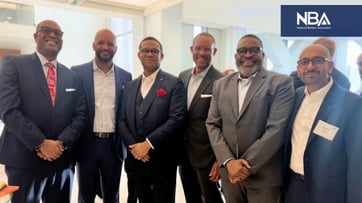
Our experts and industry insiders blog the latest news, studies and current events from inside the credit card industry. Our articles follow strict editorial guidelines.
In a Nutshell: The racial wealth gap is a persistent feature in American society. Minority depository institutions (MDIs) have historically provided financial services to low-to-moderate income and minority communities. They act as a bulwark against disproportionate financial deterioration in lower-wealth communities during times of economic stress. As the nation’s chief MDI advocacy organization, the National Bankers Association works to modernize and strengthen minority-owned institutions through technology and educational resources and by injecting outside capital into MDIs through corporate and financial partnerships. When MDIs are healthy, that means better banking for everyone.
The United States has a long history of systemic racism that kept Black people and other people of color at a financial disadvantage compared to the mainstream. America’s persistent racial wealth gap today bears this historical inequality out: Although white households represented only 63.9% of total households in the first quarter of 2023, they held 82.3% of total family wealth, 29% more wealth than their representation might suggest, according to the Federal Reserve Bank of St. Louis.
Historically, only a few minority depository institutions (MDIs) have existed at any time, and those have tended to be weak and vulnerable due to a paucity of deposits and capital. As a recent consequence, during the economic downturn of 2007-08 known as the Great Recession, more than half of Black-owned banks failed, bringing the total number down to less than 20.

As Chairman of the National Bankers Association (NBA), America’s leading MDI advocacy and support organization, Robert E. James II asserts that it doesn’t have to be this way.
James is a Howard- and Harvard-educated banking, law, real estate, and consulting professional who has a day job as CEO of Carver Financial Corporation, the only Black-owned multibank holding company in the United States. Carver Financial owns Carver State Bank, based in Savannah, Georgia, and Alamerica Bank, based in Birmingham, Alabama.
James said NBA’s efforts to strengthen, modernize, and capitalize MDIs have made them as strong as they’ve ever been, and the future looks bright. Evidence is the performance of Black-owned banks during the COVID pandemic, the most recent US downturn.
“We entered the pandemic with about 19 Black-owned banks, and now we’re at 22, which is a great sign,” James said. “We’re also increasing the amount of capital in the system to MDIs in general and Black-owned banks in particular.”
Advocacy to Protect and Extend the Historic Role of MDIs
That means a greater chance that MDIs will survive the next crisis. In stressed communities nationwide, James and the National Bankers Association make the case that healthier minority financial institutions lead to a better future for all Americans.
“As we faced in 2023 what many folks believe are going to be some pretty strong economic headwinds, perhaps a recession, I believe banks serving lower-wealth communities can come out on the other side still able to extend credit and capital to the communities that need it the most,” James said.
Unfortunately, there’s a long way to go before Americans can consider the system anywhere close to equitable. The National Bankers Association website reports that although 42% of Americans identify as a member of a minority group, only 2.8% of federally insured financial institutions are minority-owned or controlled.

The National Bankers Association’s job is to help change those numbers through policy and regulatory advocacy. The National Bankers Association is not a political organization, but it works on Capitol Hill to ensure stakeholders understand the issues in the communities it represents. It also works with policymakers to hold them to the pledge expressed in the 1980s-era Financial Institutions Reform, Recovery, and Enforcement Act, which directs regulators to preserve and promote MDIs.
“We want to make sure that MDIs can get creative with how they do business, especially the ones doing the work in the hardest-to-serve communities,” James said.
An example is Carver State Bank, which has existed for almost a century. In 2022, 99% of Carver’s lending went to minority borrowers, minority-serving organizations, or low- to moderate-income areas.
“NBA’s State of MDI Report shows that if you have an MDI physically in a community, that community will have higher homeownership rates, more access to credit and capital, and easier access to small business lending for minorities,” James said.
Foundation Helps Institutions Modernize and Educate
But because the racial wealth gap manifests America’s legacy of racial financial exclusion, MDIs are often behind the eight-ball when it comes to technology for better customer service and sorely needed financial education resources.
The nonprofit NBA Foundation helps lift MDIs by ensuring underserved communities have fair access to those resources. The website reports that the foundation strives to uplift communities, empower individuals, forge a future where economic equity reigns, and eradicate the racial wealth divide.
MDI ConnectTech is the foundation’s digital transformation program for minority banks. With the pandemic exacerbating ongoing digitization trends and the gradual demise of bank branches, MDI ConnectTech is an essential shot in the arm for resource-strapped MDIs looking to stay abreast and exceed customer expectations and efficiency goals.

The program supports investments in technology and talent to help MDIs multiply lending capacity and increase customer access to affordable financial products and services.
NBA Foundation also worked with Our Money Matters, an HBCU Community Action Development Coalition initiative in partnership with Wells Fargo Bank, to develop Enrich, a personal finance program to help MDIs reach consumers with financial assessment and analysis tools and skill-building resources.
Enrich helps bank customers learn how their personality affects their financial habits, and how to build smart spending habits through budgeting, track student loans, and plan for retirement.
Guides, videos, infographics, webinars, and articles walk users through financial fundamentals that explain banking and investment trends, and provide tools and strategies for reaching financial goals. They also delve into the psychology of finance and recommend establishing an emergency fund to overcome sudden setbacks. It’s a one-stop shop for financial wellness that puts MDIs on par with majority banks.
“We’re proud of our foundation can help our banks accelerate technology adoption and incorporate more financial literacy and education resources,” James said.
Bank and Corporate Partnerships Promote Equity
Slavery and Jim Crow relegated Blacks in America to an economic underclass for centuries, and that’s just the most obvious example of the nation’s ongoing crisis of systemic racial exclusion. According to the State of MDI report, 62% of MDI branches are located in ZIP codes with poverty rates higher than the national average, compared to 38% of non-MDI branches.
The report also shows that the median MDI branch operates in a ZIP code that is 49% non-white, compared to 21% for non-MDI banks, and 25% of MDI branches serve 3.5 million people in ZIP codes where they’re the only bank with a physical presence.
Yet deposits at MDI branches grew by 110% from $134 billion in 2010 to $282 billion in 2022, and assets grew by 34% from $246 billion to $329 billion, with a significant amount of that growth occurring just before and after the pandemic.
For James, that’s evidence that the National Bankers Association’s work to shore up capital and liquidity in historically financially weak MDIs through financial and corporate partnerships is having its intended effect. It’s an effort to right the wrongs of the MDI crisis during the Great Recession, when Black-owned banks lacked the capital to withstand regulators coming in and marking real estate down to market level.
“They’re operating in communities that have typically been redlined, which means that they’ve been systematically devalued, and they’re essentially collateral- or real estate-based lenders,” James said. “If a house is worth $250,000 one day and the next day it’s worth $100,000, you just lost $150,000 in collateral.”
Increasing equity capital and liquidity through these outside partnerships is a continuing challenge to strengthen MDIs. Moving forward, James and the National Bankers Association want billions in additional liquidity to come to MDIs through corporate partners so they can lend it out in communities that need it.
“The big banks and corporate America have plenty of liquidity on their balance sheets,” James said. “And if they really want to make an impact — for racial equity reasons, diversity and inclusion reasons, or just community-building reasons — the bottom line is that if we eliminate the racial wealth gap, we’ll add another trillion dollars to the economy. And that’s good for everybody.”


![How to Build Business Credit: 7 Expert Tips to Build Credit Fast ([updated_month_year]) How to Build Business Credit: 7 Expert Tips to Build Credit Fast ([updated_month_year])](https://www.cardrates.com/images/uploads/2017/02/how-to-build-business-credit1.png?width=158&height=120&fit=crop)
![9 Expert Solutions: Build Credit Without a Credit Card ([updated_month_year]) 9 Expert Solutions: Build Credit Without a Credit Card ([updated_month_year])](https://www.cardrates.com/images/uploads/2018/05/without2.png?width=158&height=120&fit=crop)

![7 Best Starter Credit Cards to Build Credit ([updated_month_year]) 7 Best Starter Credit Cards to Build Credit ([updated_month_year])](https://www.cardrates.com/images/uploads/2020/03/Best-Starter-Credit-Cards-to-Build-Credit.jpg?width=158&height=120&fit=crop)
![5 Prepaid Cards That Build Credit ([current_year]) 5 Prepaid Cards That Build Credit ([current_year])](https://www.cardrates.com/images/uploads/2021/03/Prepaid-Cards-That-Build-Credit.jpg?width=158&height=120&fit=crop)

![How to Leverage Credit Cards to Build Wealth ([updated_month_year]) How to Leverage Credit Cards to Build Wealth ([updated_month_year])](https://www.cardrates.com/images/uploads/2021/06/How-to-Leverage-Credit-Cards-to-Build-Wealth.jpg?width=158&height=120&fit=crop)
